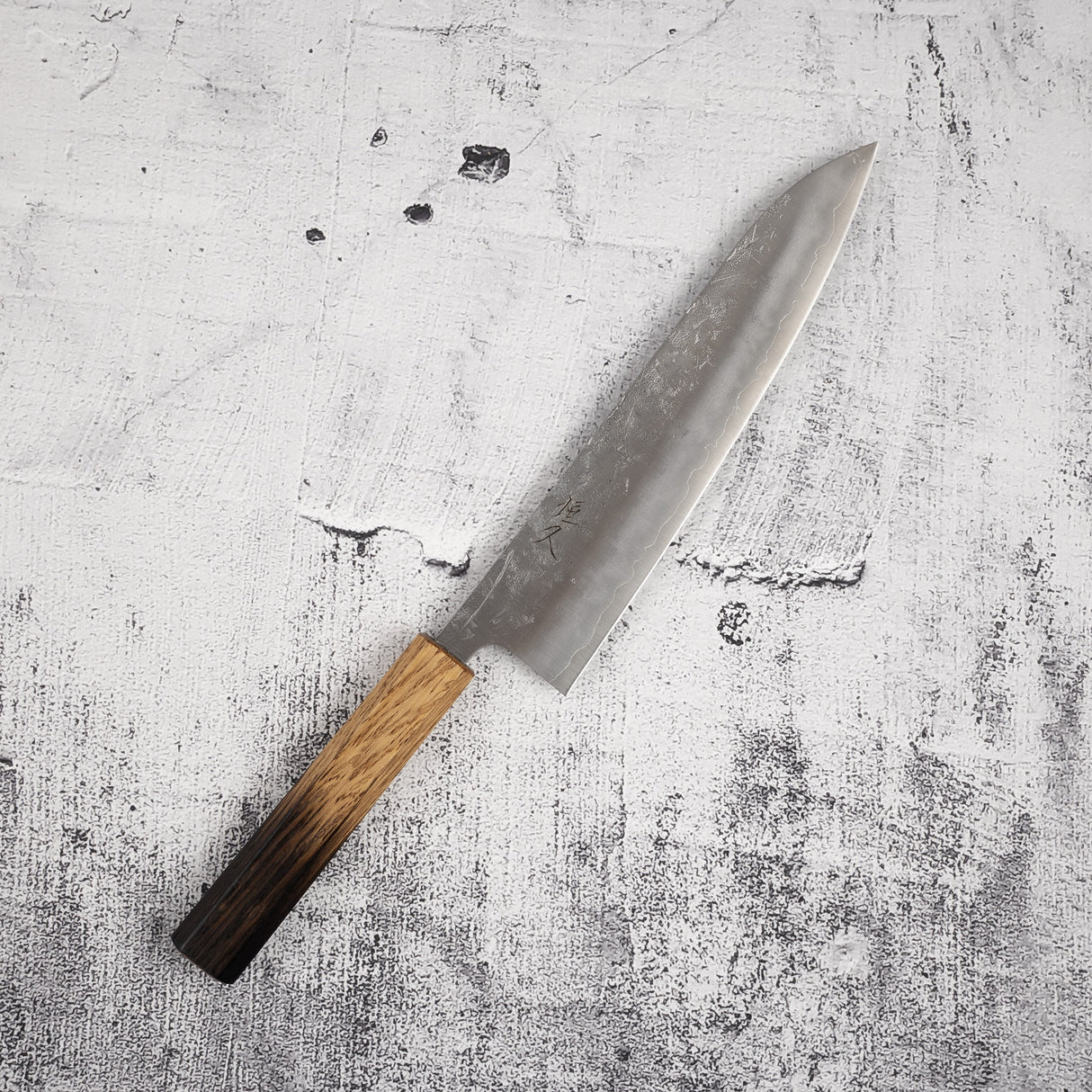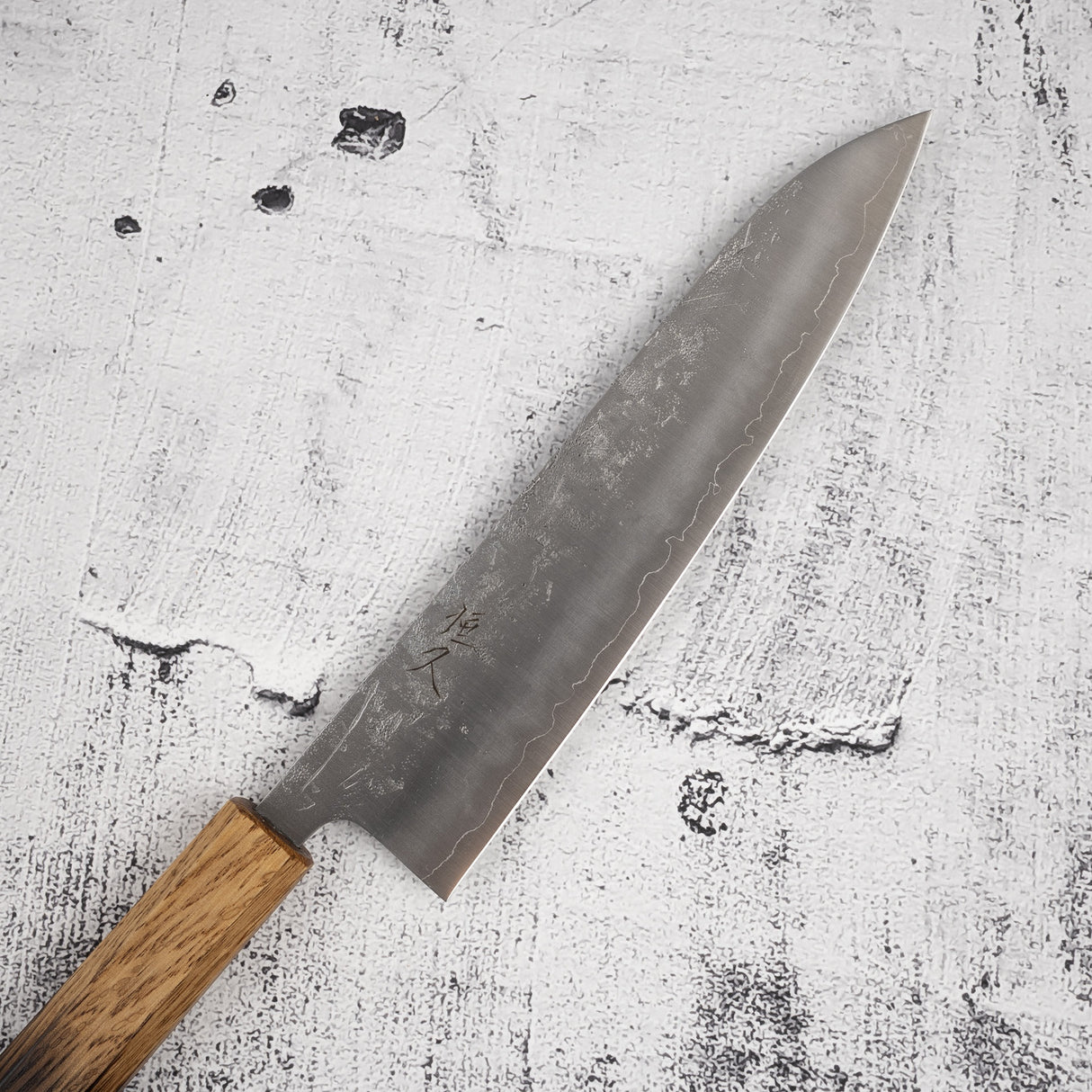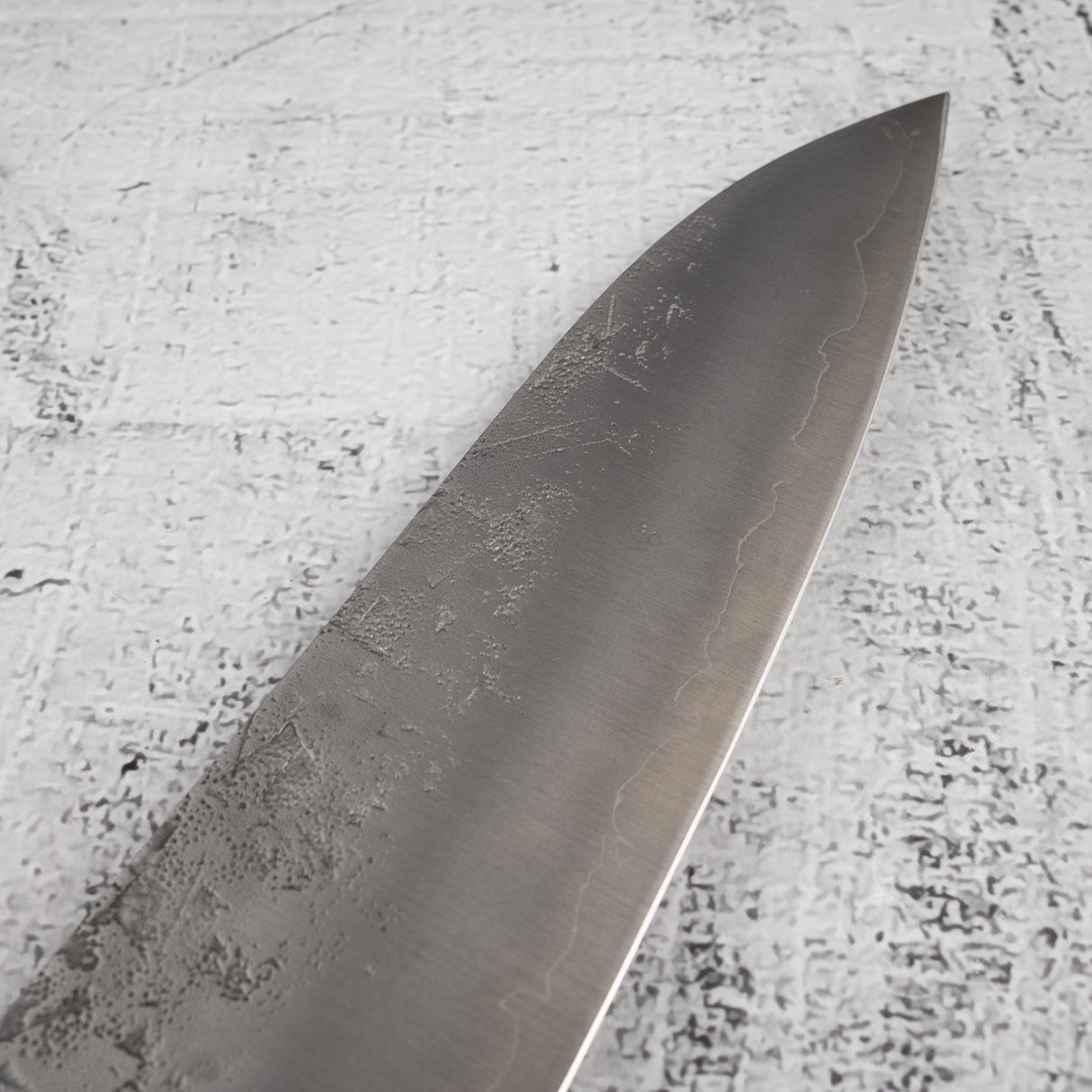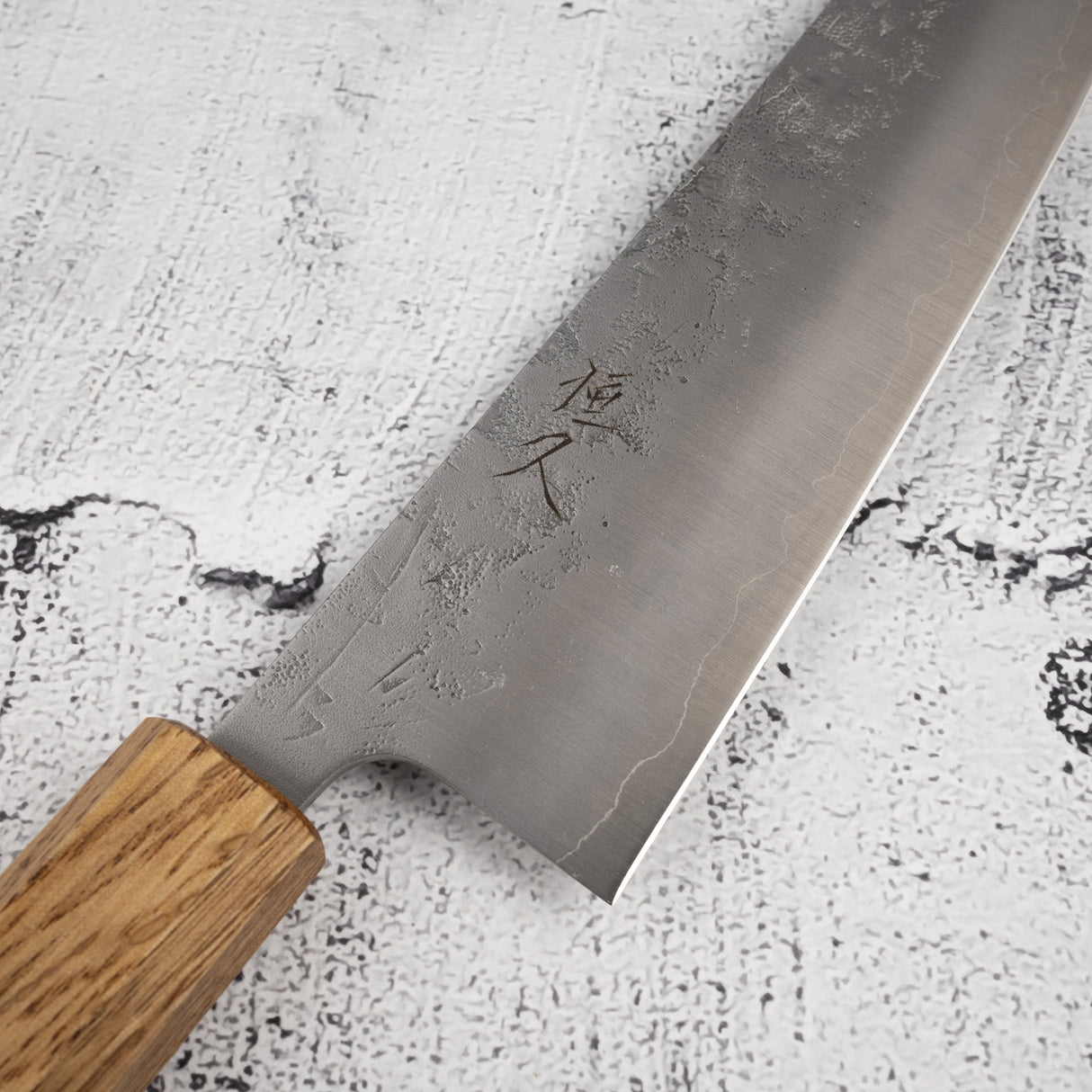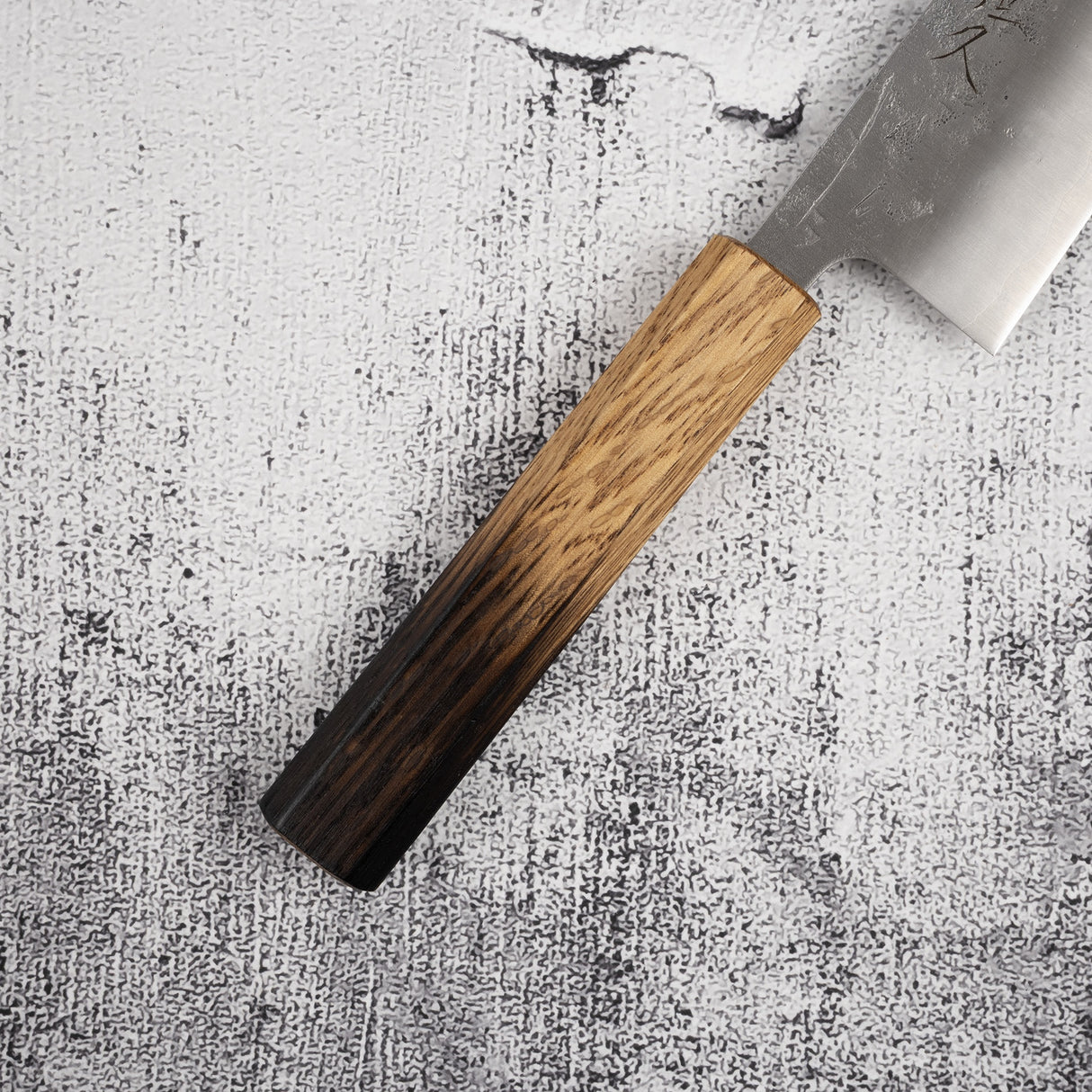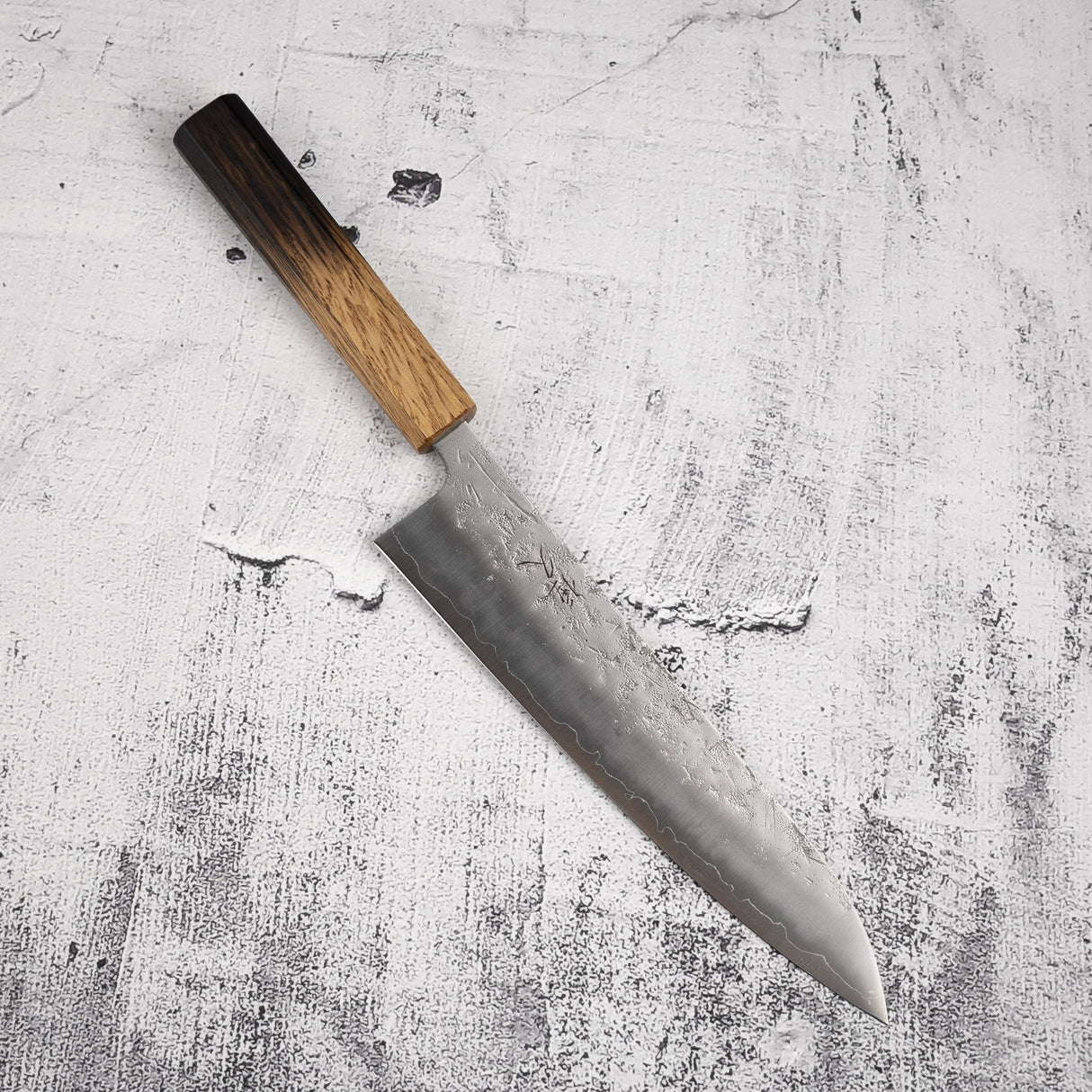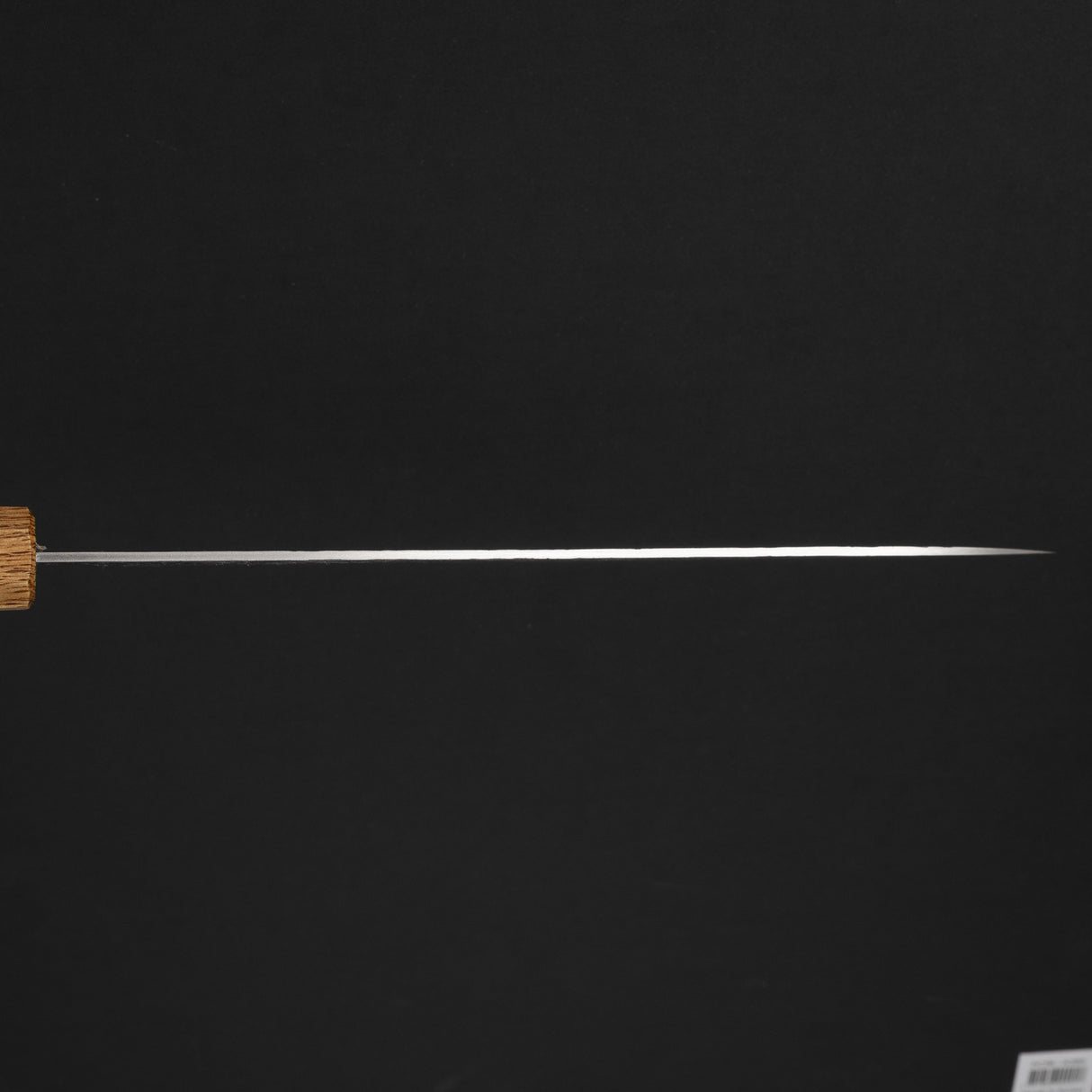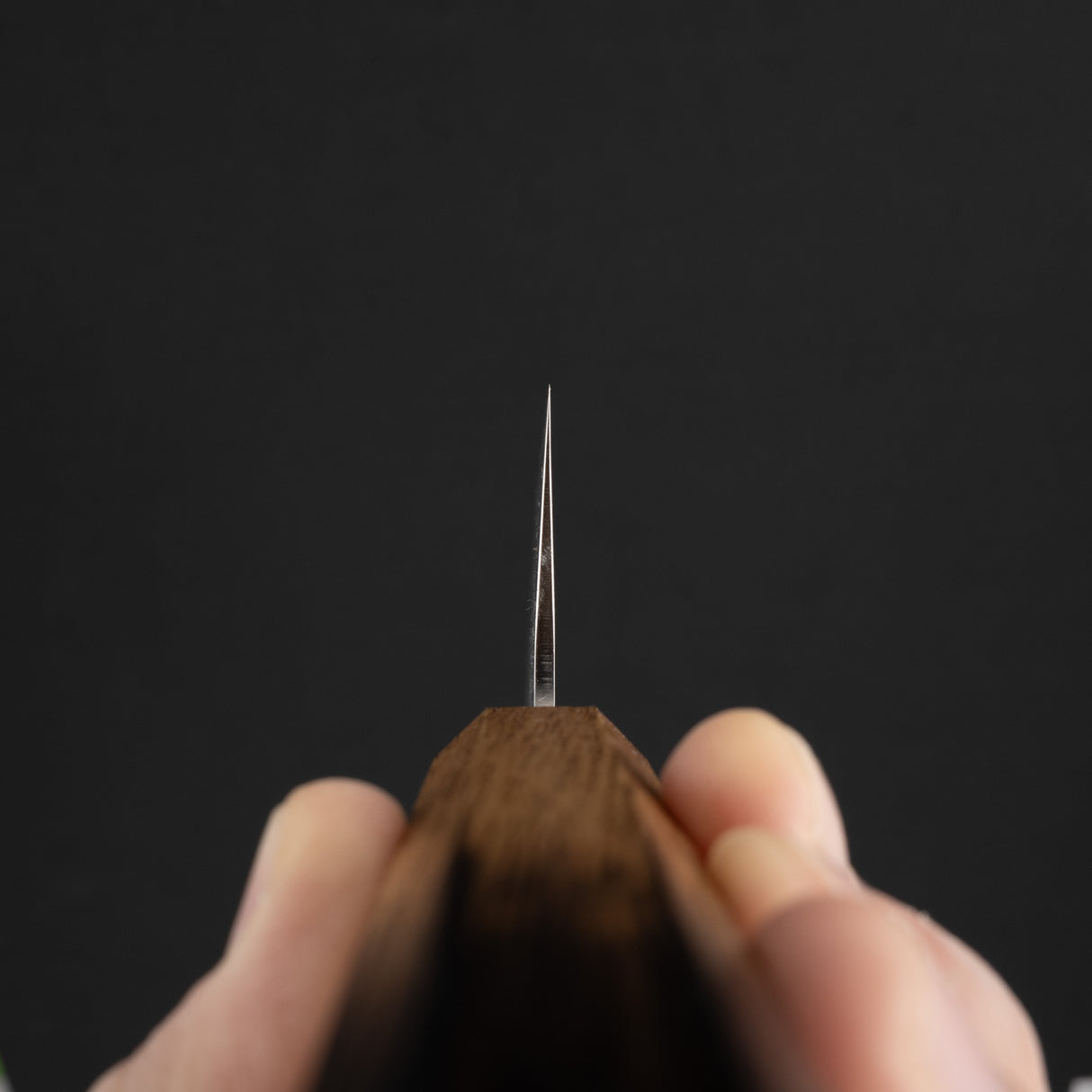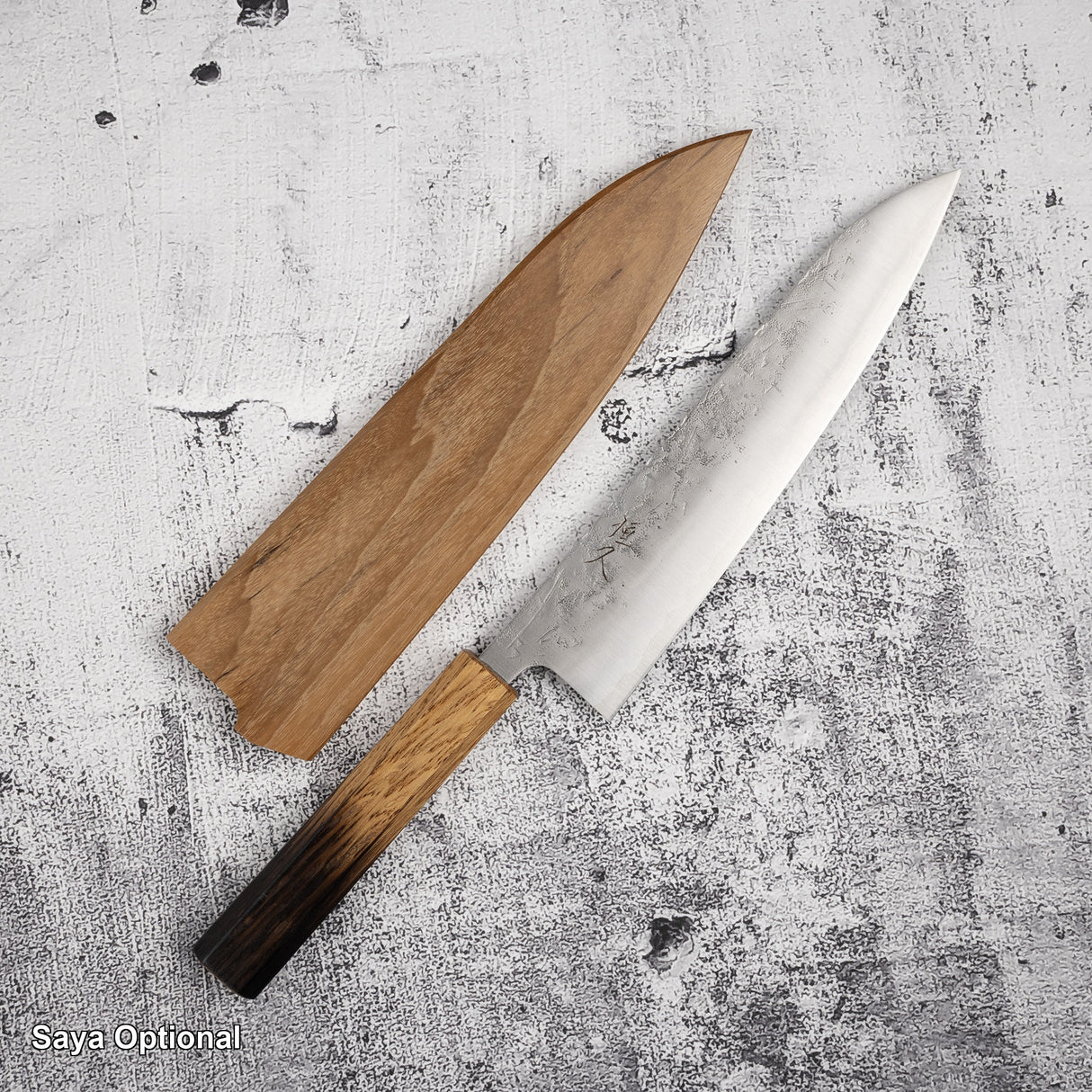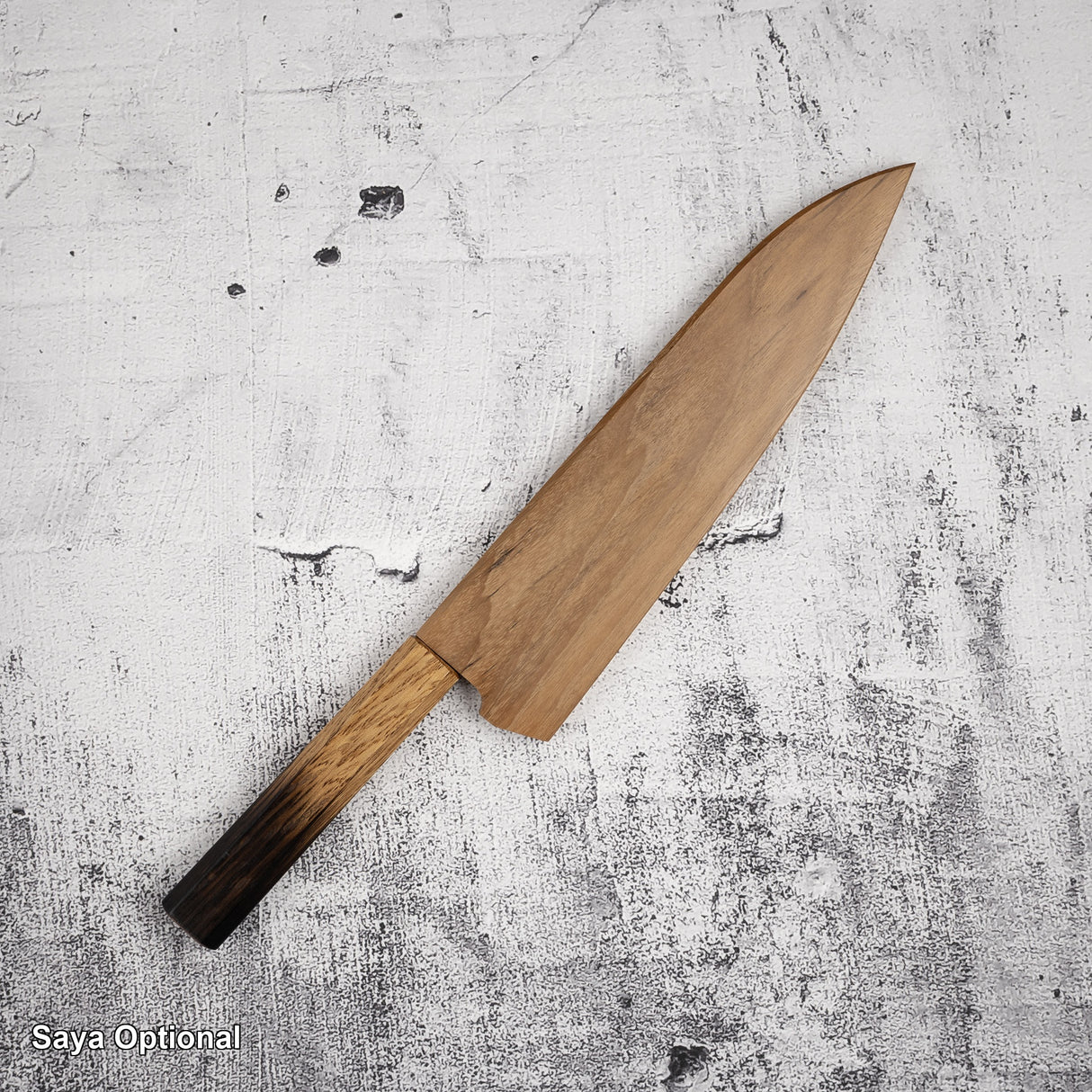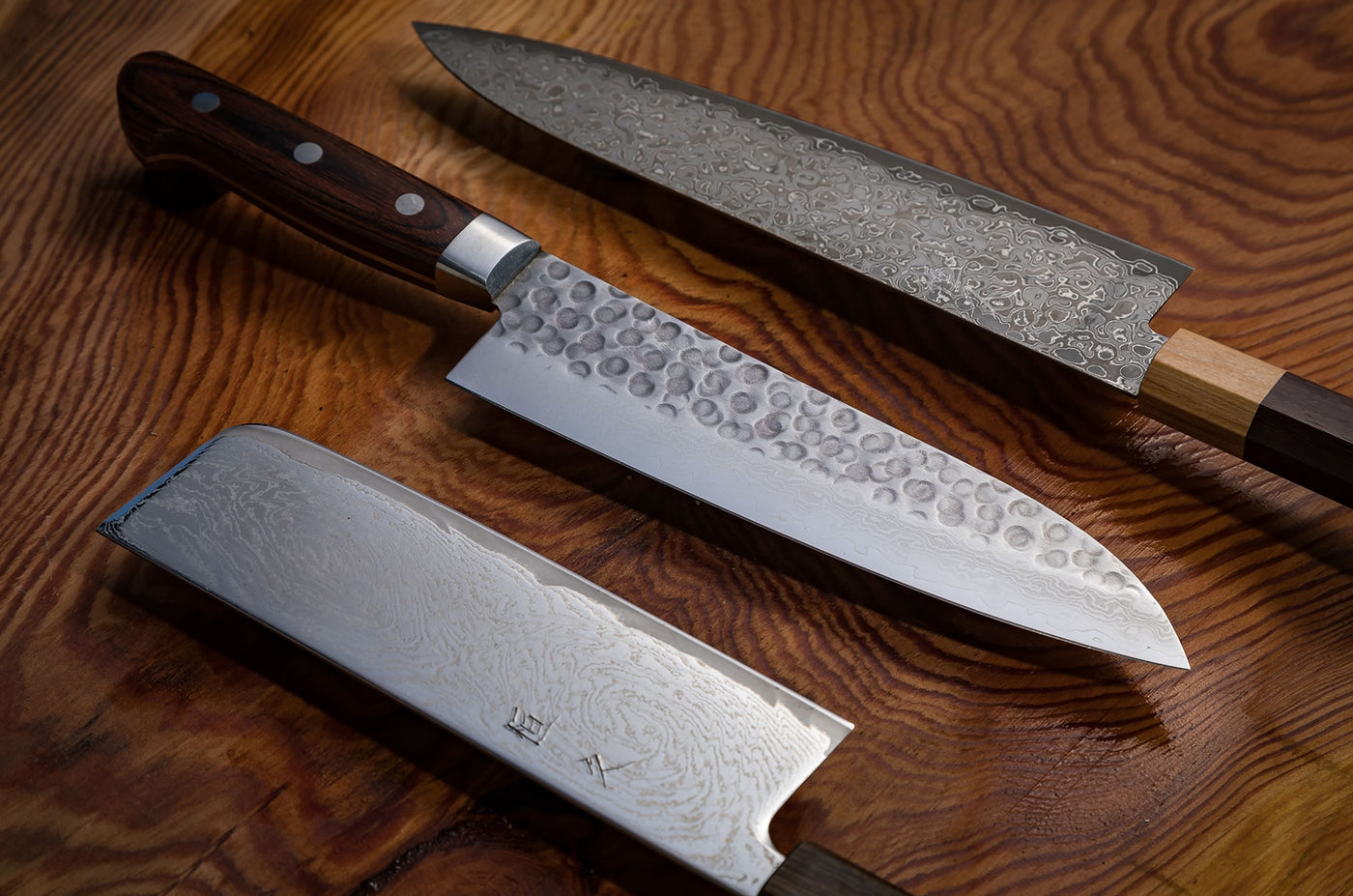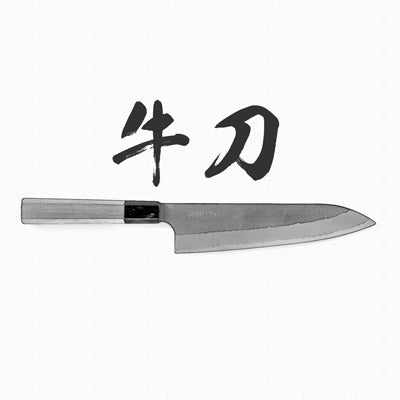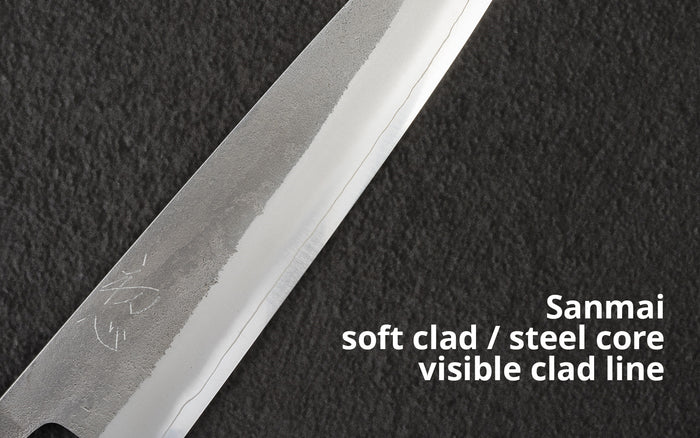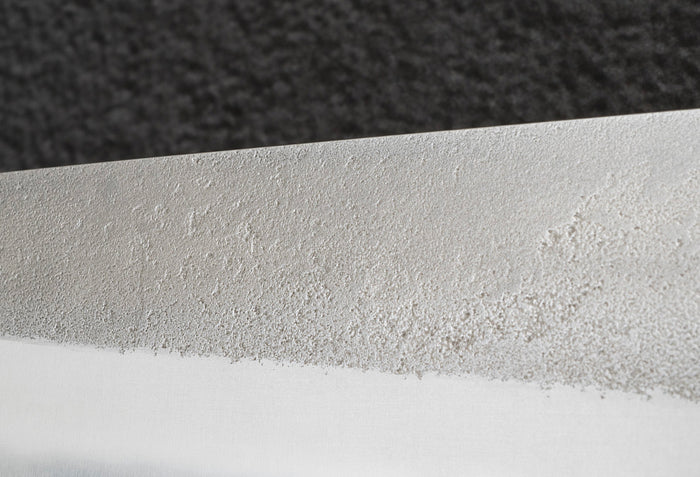Iron Clad | SKU:
TNHS-SKD-GY210-KOY
Tsunehisa SLD Washiji Gyuto 210mm Burnt Kashi
Sale price
$195.98
Regular price
$229.95
Unit price
/
Unavailable
Tsunehisa SLD Washiji Gyuto 210mm Burnt Kashi is backordered and will ship as soon as it is back in stock.
Couldn't load pickup availability
Detailed Specifications
| Line | Tsunehisa SLD Washiji |
| Profile | Gyuto / Chefs Knife |
| Bevel Type | Double Bevel |
| Weight | 146 g | 5.1 oz |
| Edge Length | 212 mm | 8 11/32″ |
| Heel Height | 46 mm | 1 13/16″ |
| Width @ Spine | 2.0 mm | 5/64″ |
| Width @ Mid | 1.8 mm | 5/64″ |
| Width @ 1cm from Tip | 0.6 mm | 1/32″ |
| Steel | SLD | Stainless |
| Blade Construction | Sanmai - Stainless Clad |
| Hardness (HRC) | 62 - 64 |
| Surface Finish | Nashiji |
| Handle | Burnt Kashi Octagonal |
| Region | Fukuyama |
| Best for |
|

| Pros | Cons |
|
|
|
Care Instruction
- Don't cut hard things! Japanese knives are brittle so bone hacking is a NO NO!
- Wash with neutral detergent after use, and wipe dry;
- Please don't wash knife with dishwasher, it will damage the wood handle;
- Be careful not to leave the knife close to a heat source for a long time;
- It is a lot more dangerous to cut with a blunt knife than a sharp knife!
- It is best to sharpen a Japanese knife regularly on a waterstone.

